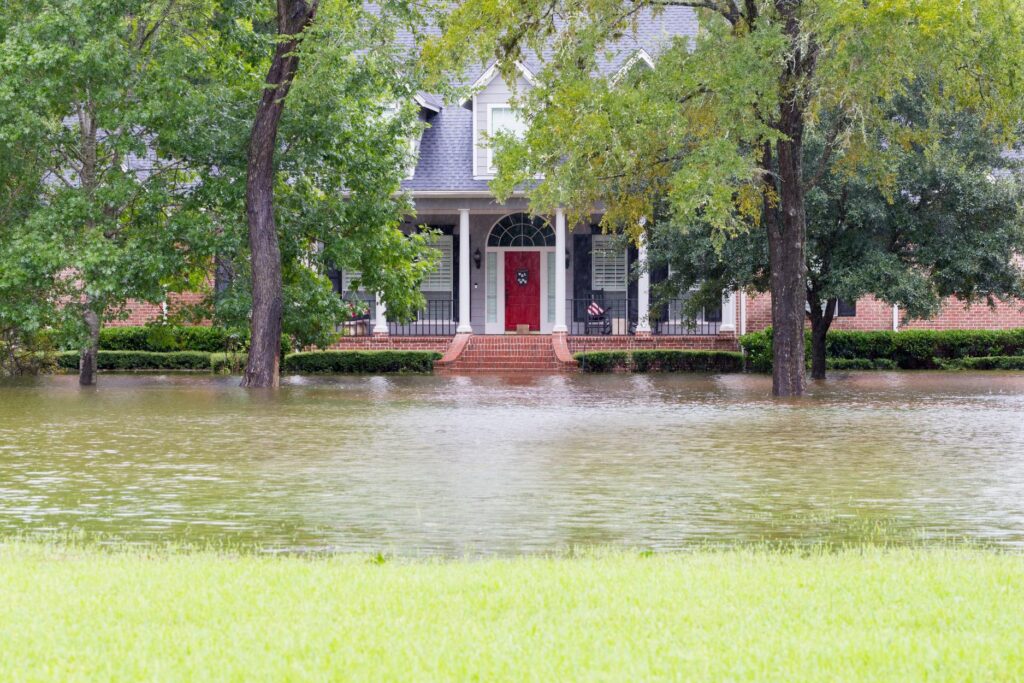
Contents
In flood cleanup, the choice between swift professional intervention and slower DIY methods can greatly impact your property’s recovery. While you might consider tackling the issue yourself to save money, the potential for error and prolonged damage looms large. Understanding the best techniques for water removal and drying can not only expedite the process but also safeguard your home against future floods. What factors should you weigh before making that critical decision?
Key Takeaways
- Effective flood cleanup techniques minimize property damage and health risks by ensuring swift and thorough water removal.
- Professional methods utilize specialized equipment that enhances efficiency and prevents costly mistakes during cleanup.
- Proper water removal and drying techniques reduce the likelihood of mold growth, safeguarding your health and property.
- Documentation of cleanup efforts aids in successful insurance claims, ensuring financial support for repairs and restoration.
- Implementing these techniques fosters emotional recovery by preserving belongings and facilitating a smoother restoration process.
Understanding the Importance of Quick Response
When floods strike, responding quickly can make all the difference in mitigating damage to your property and health. Effective flood response hinges on your readiness and emergency planning. When you have a clear plan in place, you can act swiftly, reducing the risk of loss and injury.
Start by identifying local resources and establishing an evacuation route. This preparation enables you to navigate the chaos that floods bring.
Once a flood occurs, time is of the essence. Engaging with emergency services and mobilizing community support can greatly enhance your response efforts.
Efficiently removing water and debris within the first 24 to 48 hours minimizes long-term damage to your property. Remember, your health is paramount; contaminated water can pose serious health risks.
Assessing the Extent of Water Damage
To effectively assess the extent of water damage, start with a thorough initial inspection of affected areas.
You’ll need to classify the damage based on the severity and type of exposure, which will guide your restoration efforts.
Understanding these factors is vital for implementing the right cleanup techniques.
Initial Inspection Process
Although water damage can vary considerably, conducting a detailed initial inspection is crucial for evaluating its extent and formulating an effective cleanup plan.
Start your initial assessment by using an inspection checklist to systematically evaluate all affected areas. Check for visible signs of water intrusion, such as discoloration or warping in walls and floors.
Don’t forget to assess hidden spaces, like crawl spaces and behind appliances, where moisture may accumulate. Document any structural damage, as well as the presence of mold or mildew.
This extensive approach allows you to prioritize the most critical areas for remediation. By being meticulous in your inspection, you can better allocate resources and ensure a more effective flood cleanup process overall.
Damage Classification Methods
After completing the initial inspection, the next step involves classifying the damage to determine the severity and necessary response. Effective damage assessment relies on established classification criteria that help you identify the level of water damage. This classification allows you to prioritize cleanup efforts and allocate resources efficiently.
| Damage Level | Description | Action Required |
|---|---|---|
| Level 1 | Minor, limited areas affected | Basic drying techniques |
| Level 2 | Moderate, several rooms | Professional intervention |
| Level 3 | Severe, structural damage | Full restoration needed |
Safety Precautions During Cleanup
While tackling flood cleanup, prioritizing safety precautions is essential to protect yourself from potential hazards.
First, equip yourself with proper protective gear, such as gloves, boots, and masks, to minimize exposure to contaminants like mold and bacteria. Always check your surroundings for structural damage before entering any area; unstable surfaces can pose serious risks.
Next, establish a plan for emergencies. Keep emergency contacts readily accessible, including local authorities and medical services, in case injuries or hazardous situations arise. It’s wise to work in pairs or teams, enhancing safety through mutual support.
Before starting the cleanup, verify that your electrical systems are safe to operate, turning off power if necessary.
Finally, stay hydrated and take regular breaks to avoid fatigue, which can impair your judgment and reaction times. Following these safety precautions will help ensure a smoother and safer cleanup process.
Effective Water Removal Methods
To effectively remove water from a flooded area, you’ll need to employ a combination of techniques tailored to the specific conditions of your environment. Utilizing pump systems can greatly expedite the removal process, especially in larger areas with standing water. For smaller spaces, extraction tools like wet vacuums can be invaluable.
Here’s a comparison of common water removal methods:
| Method | Best For | Advantages |
|---|---|---|
| Pump Systems | Large areas | Fast water removal |
| Extraction Tools | Confined spaces | Precision and control |
| Sump Pumps | Basements or pits | Automatic operation |
Drying Techniques for Affected Areas
To effectively dry affected areas after a flood, you’ll need to focus on dehumidification methods and air circulation strategies.
Implementing industrial dehumidifiers can greatly reduce moisture levels, while maximizing airflow helps expedite the drying process.
Understanding these techniques is essential to prevent mold growth and structural damage.
Dehumidification Methods
As you tackle flood cleanup, effective dehumidification methods are essential for drying affected areas and preventing mold growth. Understanding dehumidifier types can help you select the right equipment based on humidity levels and the specific needs of your space. Here’s a quick overview:
| Dehumidifier Type | Ideal Conditions | Capacity (Pints/Day) |
|---|---|---|
| Refrigerant | Warm, humid environments | 30-70 |
| Desiccant | Cool, low humidity areas | 10-30 |
| Electronic | Small spaces | 5-15 |
Air Circulation Strategies
How can you effectively enhance air circulation during flood cleanup?
First, prioritize airflow management by strategically placing fans throughout the affected areas. Position them to create a cross-breeze, directing moist air out while drawing in drier air. Use high-velocity fans for maximum impact, as they can considerably speed up the drying process.
Additionally, open windows and doors to facilitate natural ventilation, but be mindful of outdoor humidity levels.
Implementing dehumidifiers will further aid in humidity control, working hand-in-hand with your air circulation strategies. Monitor moisture levels regularly to ensure effective drying and prevent mold growth.
Mold Prevention Strategies
Since mold thrives in damp environments, implementing effective prevention strategies is crucial after a flood.
First, make sure your home is thoroughly dried within 24 to 48 hours. Use dehumidifiers and fans to accelerate moisture removal.
Next, inspect and repair any leaks in walls, roofs, or plumbing, as these can contribute to mold growth.
Utilizing mold-resistant products, such as paints and drywall, can provide extra protection. Keep indoor humidity levels below 60% by using air conditioners and regularly checking humidity levels with a hygrometer.
Additionally, regularly clean and maintain gutters and downspouts to prevent water accumulation.
If you notice any signs of mold, act quickly—clean small areas with soap and water or a mixture of vinegar and water.
Salvaging and Restoring Damaged Belongings
Salvaging and restoring damaged belongings after a flood requires a systematic approach to minimize loss and maximize recovery. Start by evaluating the damage to each item, prioritizing those that hold significant sentimental value.
For belonging restoration, clean and dry items as soon as possible to prevent mold growth. Use a gentle cleanser for hard surfaces and consider soaking fabric items in a solution of water and mild detergent.
For sentimental items like photographs or heirlooms, you may need specialized techniques. Freeze wet photos to halt deterioration, then carefully dry them in a cool, dark place.
Don’t forget to document your efforts; it can aid in insurance claims.
Finally, consider whether an item’s condition justifies restoration costs. If it’s irreparable, allow yourself to grieve the loss while focusing on salvaging what remains. Each step you take enhances the possibility of preserving your cherished belongings.
Professional vs. DIY Cleanup Approaches
After evaluating the damage and salvaging what you can, the next step is deciding how to tackle the cleanup process. You’ll have two primary options: professional services or a DIY approach.
Here’s a quick cost comparison and expertise levels to contemplate:
Cost: Hiring professionals can be expensive, but they often save you money in the long run by preventing further damage.
DIY cleanup may seem cheaper upfront, but can lead to costly mistakes if not done correctly.
Expertise: Professionals possess specialized knowledge and equipment, ensuring thorough cleanup. If you lack experience, your efforts might fall short.
- Time: Cleanup can be time-consuming. Professionals can often complete the job faster, allowing you to focus on recovery.
Ultimately, weigh the cost and expertise against your ability to manage the situation effectively. Your choice will notably impact the outcome of your flood cleanup efforts.
Insurance Claims and Documentation
Steering through insurance claims after a flood can feel overwhelming, but proper documentation is key to a successful process. Start by gathering all relevant insurance documentation, including your policy and any correspondence with your insurer. This will streamline the claim processes and help you avoid common pitfalls.
Here’s a simple overview of essential documentation:
| Document Type | Purpose | Emotional Impact |
|---|---|---|
| Photos of Damage | Visual evidence for your claim | Validates your experience |
| Repair Estimates | Details costs for repairs | Reinforces your financial needs |
| Loss Inventory List | Thorough list of damaged items | Highlights personal loss |
| Correspondence Records | A thorough list of damaged items | Ensures accountability |
Long-Term Solutions for Future Flooding Risks
While flood recovery efforts are vital, implementing long-term solutions can considerably reduce future risks. Investing in flood-resistant infrastructure and enhancing community preparedness can make a significant difference.
Here are three important strategies to take into account:
Upgrade Drainage Systems: Improving stormwater management systems can help prevent water accumulation and minimize flooding during heavy rains.
Create Buffer Zones: Establishing green spaces and wetlands can absorb excess water, acting as natural barriers against floodwaters.
Educate the Community: Hosting regular workshops on flood preparedness ensures residents know how to respond proactively, from evacuation plans to emergency kits.
Review
Choosing effective flood cleanup techniques is essential for protecting your home. By acting swiftly and employing professional methods, you can greatly reduce damage and mold risks. While DIY may seem tempting, the right expertise and equipment can save you time and money in the long run. Prioritizing proper cleanup safeguards your belongings and ensures your peace of mind.
Recent Posts
Master Flood Recovery: Test Your Water Removal Skills
Many people underestimate the complexity of flood recovery, often thinking it’s just about removing water.
Why Is Emergency Water Removal Crucial After Flooding?
When flooding occurs, emergency water removal is vital to mitigate serious health risks and property
Quick Tips for Post-Flood Water Removal
After a flood, knowing how to act quickly can make a big difference. You need
